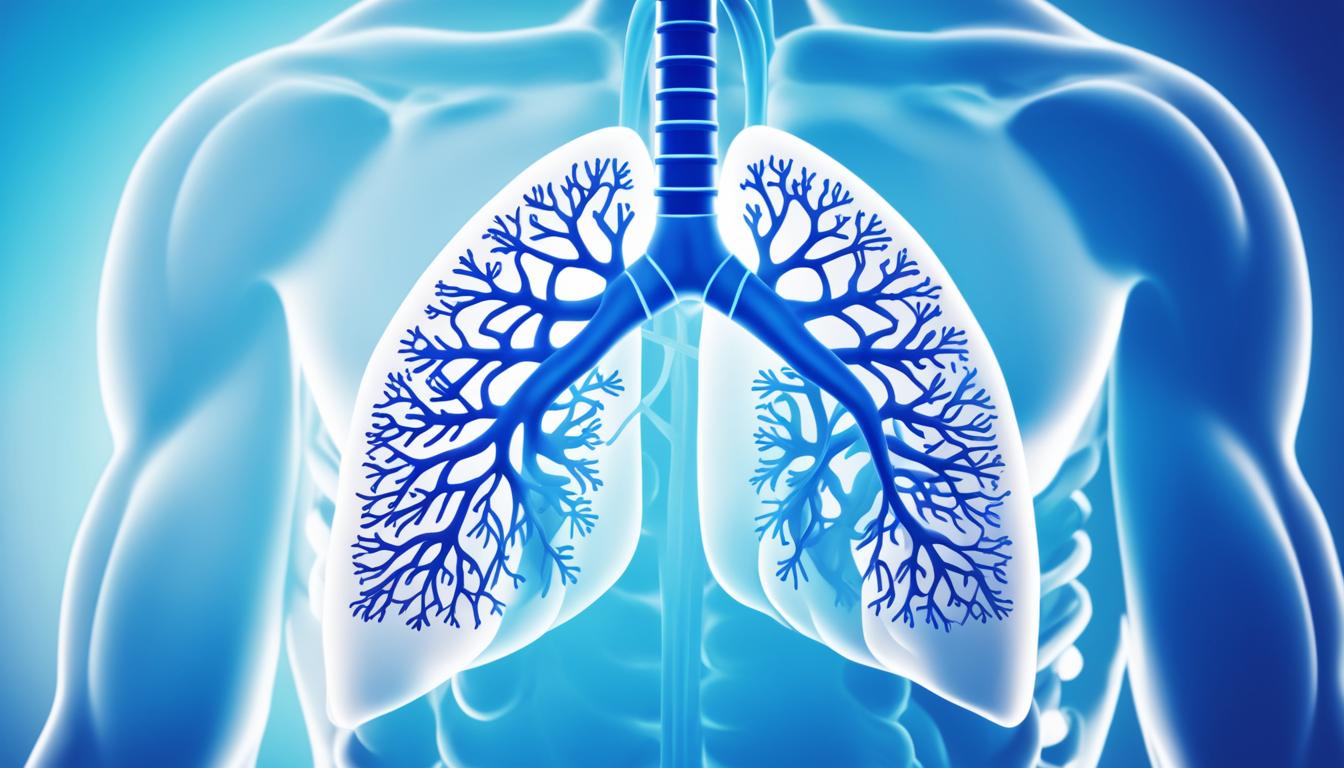Acute pulmonary edema is serious. It happens when fluid builds up in the lungs. This makes breathing hard and can cause chest pain. For some, it can lead to deadly heart problems. Getting diagnosed and treated quickly is key to staying healthy.
Many things can cause pulmonary edema. Heart issues, like heart failure, are common culprits. They make it hard for the heart to push blood, causing fluid in the lungs. But, not just the heart can be to blame. Things like infections, high brain pressure, and toxic exposure can also trigger it.
Diagnostics are vital for spotting and understanding pulmonary edema. Doctors look at the patient’s history and use tests like X-rays and heart scans. These check how bad it is and what’s causing it. They also help rule out other lung problems and find the best treatment plan.
Treating pulmonary edema focuses on making breathing easier and lowering lung fluids. In bad cases, when normal treatments don’t work, stem cell therapy could help. Stem cells might heal the lung and aid breathing. Scientists are studying if this could really work. They hope it might improve how well people with pulmonary edema do.
Key Takeaways:
- Pulmonary edema is characterized by the accumulation of fluid in the lungs, leading to symptoms like shortness of breath and chest pain.
- Causes of pulmonary edema can range from cardiovascular conditions to non-cardiac factors such as infections and toxins.
- Diagnosis involves a thorough medical history review and imaging tests like X-rays, electrocardiograms, and echocardiography.
- Treatment focuses on reducing symptoms and pulmonary congestion, with stem cell therapy being explored as a potential alternative in severe cases.
- Prompt diagnosis and treatment are crucial in managing pulmonary edema and preventing life-threatening complications.
Pulmonary Edema and Stem Cell Transplantation: Risks and Management
Pulmonary edema can occur after a stem cell transplant. This adds complexity to patient care. It can happen due to infections or other non-infectious reasons.
Infections as a Cause of Pulmonary Edema
Infections often cause lung issues after a transplant. These could be from bacteria, viruses, funguses, or other small organisms. They are serious and can affect how well the patient breathes. Early action is key to deal with these issues.
Noninfectious Causes of Pulmonary Edema
Different factors can also lead to lung problems post-transplant. This includes the drugs used before the transplant, issues with tissue matches, or how donated cells were handled. Even the body’s reaction to the transplant could cause issues. Handling these factors early is crucial.
Managing Pulmonary Edema in Transplant Recipients
Preventing and spotting lung issues quickly is vital for a transplant patient’s health. These complications may vary and include different types of edema. It’s important to treat them without delay to help the patient recover better.
More study is necessary to see if stem cell therapy can help with pulmonary edema after a transplant. Using stem cells might provide new ways to care for patients and lower the chances of lung problems.
| Cause of Pulmonary Edema | Examples |
|---|---|
| Infectious Causes | Bacterial, viral, fungal, and single-celled organism infections |
| Noninfectious Causes | Drug reactions, tissue type issues, improper cell handling |
Radiographic Manifestations and Etiologies of Pulmonary Edema
Chest X-rays (CXR) and chest CT scans are key for spotting and checking pulmonary edema. They give us a good look at how the condition appears in images. Some usual signs of pulmonary edema are wider vascular pedicle, swollen lymphatic channels, and more. These signs help medical pros spot and tell apart the reasons behind the edema.
When doctors look at CXRs and CT scans, they can note certain signs of pulmonary edema. They might see Kerley lines, which point to the disease. These images also show if the blood vessels are too full or if there is fluid in the lung tissue. This all helps to pinpoint and diagnose the edema accurately.
Learning about how pulmonary edema shows up on images is super important. It helps doctors find out the real reasons a patient might have the condition. This way, they can pick the best ways to treat and manage the patient’s health. A clear diagnosis means a more effective treatment plan for the patient.

